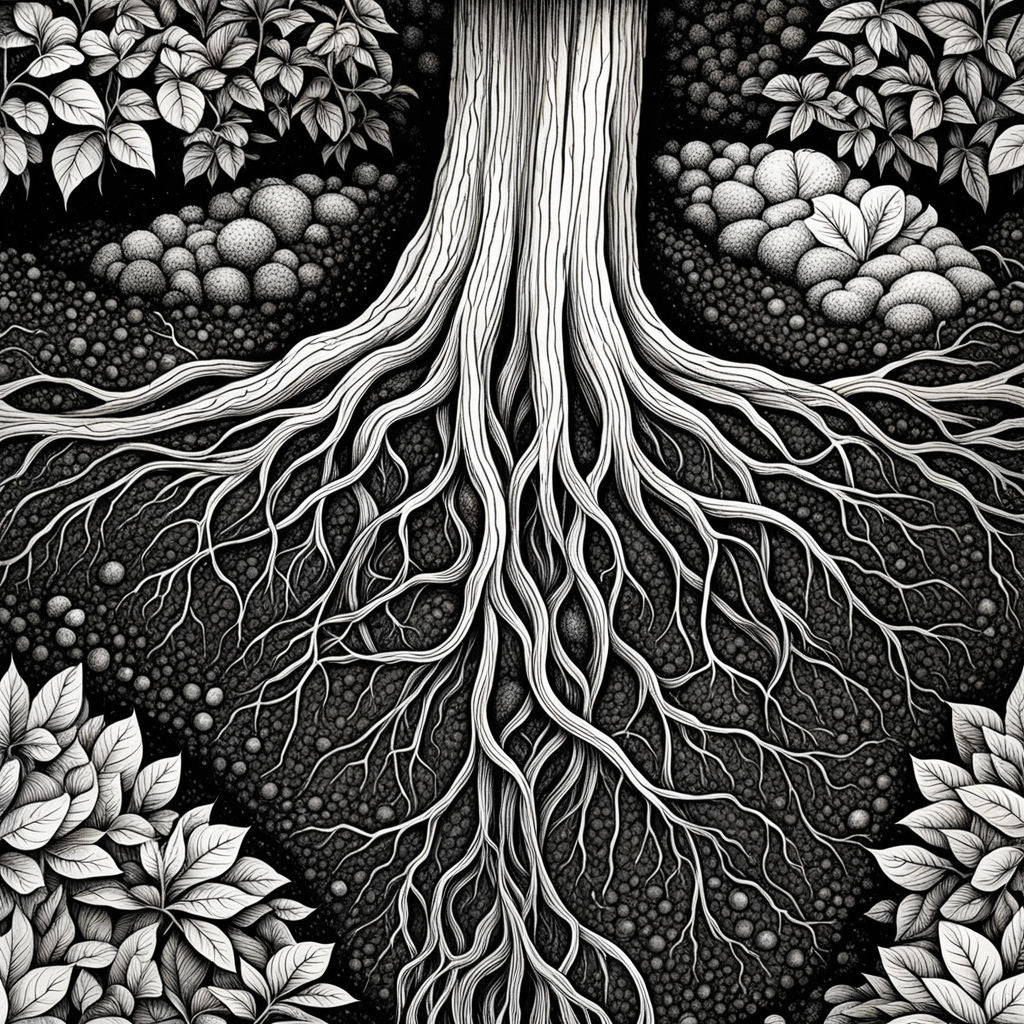Table of Contents
The possibility of having a real effect on climate change is realistic if we all work at locking away, or sequestering carbon in the garden. The more carbon that can be locked away in soil, the slower climate change will be.
What puts carbon in soil?
The majority of carbon in soil is that which is absorbed by the plant from carbon dioxide in the atmosphere and left under the surface of the soil. Most of the carbon above ground held in the vegetative growth of a plant decomposes when the plant dies and is released back into the atmosphere, with a small amount remaining stable as humus.
Even trees - the climate offsetting favourite - hold the majority of their carbon above the ground, and if that catches fire, or needs to be cut down due to being to close to a house, or for timber, than that carbon store is cut short. Even when it's say turned into furniture, a lot of energy is used cutting, shaping, transporting and manufacturing the wood. Also how many gardens can grow more trees which will stay there in the long term?
Perennial plant roots sequester the most carbon dioxide in soil

It goes against the grain to say it, but perennial plant roots sequester the most carbon dioxide (CO2) in soil. They sequester on average 1.34 tonnes of carbon dioxide per acre, per year, which the US EPA calculate would require 1.6 acres of US woodlands to sequester. Their greenhouse gas equivalency calculator includes real world issues, such as wild fires and deforestation which simplistic numbers reported by tree offsetters don't capture. Indeed a paper in The journal Resources, Conservation & Recycling in September 2022 had a comparative study on woody plants and herbaceous plants. The result showed that it is better to plant herbaceous plants rather than woody plants to achieve rapid carbon fixation and recycling for fighting carbon change.
But don't plant roots decompose when the plant dies?
Yes, roots do decompose too and release some carbon dioxide (CO2) into the atmosphere, but this process is more complex than just dead roots rotting away:
- Root Respiration: Even living roots release CO2 into the soil as part of their normal cellular respiration. They use sugars produced by photosynthesis to fuel their vital functions, and CO2 is a byproduct of this process. This CO2 then diffuses through the soil and ultimately escapes into the atmosphere.
- Decomposition: When roots die, they become food for decomposer organisms like bacteria and fungi. These organisms break down the organic matter in the roots, releasing nutrients and converting carbon into energy. Depending on the soil conditions and the type of decomposer present, this process can produce either CO2 or methane (CH4). Generally, well-aerated soils favour CO2 production, while waterlogged or anaerobic conditions can lead to more methane formation.
- Overall Contribution: The amount of CO2 released from root decomposition depends on various factors like soil temperature, moisture, oxygen levels, and the type of root and decomposer community. However, root decomposition typically contributes less to overall CO2 emissions compared to above ground plant matter like leaves and branches.
- Carbon Sequestration: While roots do release CO2 on decompostion, they also play a crucial role in carbon sequestration. Living roots store carbon in their tissues, and some of this carbon remains in the soil even after root death. Additionally, the formation of humus from decomposed roots helps to stabilise soil carbon, keeping it locked away from the atmosphere for longer periods.

Douglas B. Kell, CC BY 3.0 <https://creativecommons.org/licenses/by/3.0>, via Wikimedia Commons
Deeper roots sequester more carbonPerennial plants have much deeper roots than annuals, and their root to shoot ratio is much higher than that of woody plants.
Studies have shown that deeper roots sequester more carbon:
- Increased Storage Capacity: Deeper soils often have greater capacity to store carbon compared to shallower topsoil layers. This is because they're less prone to disturbances like erosion and tillage, which can release stored carbon back into the atmosphere as the exposed organic matter decomposes. Deeper roots can access and store carbon in these deeper soil layers, effectively locking it away for longer periods.
- Enhanced Root Biomass: Plants with deeper root systems often have greater overall root biomass, meaning they have more tissues to store carbon. As roots grow and extend deeper, they contribute more organic matter to the soil, increasing its carbon content.
- Root Exudates: Roots release a variety of substances called exudates, which act as food for soil microbes.These microbes, in turn, play a crucial role in stabilising soil carbon by binding it to mineral particles and transforming it into more stable forms. Deeper roots can stimulate microbial activity in deeper soil layers, leading to enhanced carbon sequestration.
- Physical Protection: Deeper roots can physically protect soil carbon from decomposition and release.They can create more stable soil aggregates, which physically enclose and protect carbon-rich organic matter, making it more difficult for the carbon to be released back into the atmosphere.
- Longer Residence Time: Carbon stored in deeper soils stays there for longer periods before being re-released because deeper soils are less exposed to oxygen and have slower decomposition rates.
How much carbon is sequestered by roots?
So given that the amount of carbon sequestered by roots underground depends on the mass of the plants roots, how deep those roots are and how stable the soil is and the amount of exudites with it's associated soil effects, there is no definitive answer. It stands to reason that bigger root systems sequester more carbon. For an depth look see this article about choosing the best garden plants for carbon sequestration
So how much carbon is sequestered by plants in gardens?
If you just want a one liner, perennial herbaceous plants such as ornamental grasses sequester about 3.3 tonnes of carbon dioxide into the soil, per hectare, per year - so that's 33 kg per square meter - or 1.34 tonnes per acre. (According to Project Drawdown)

